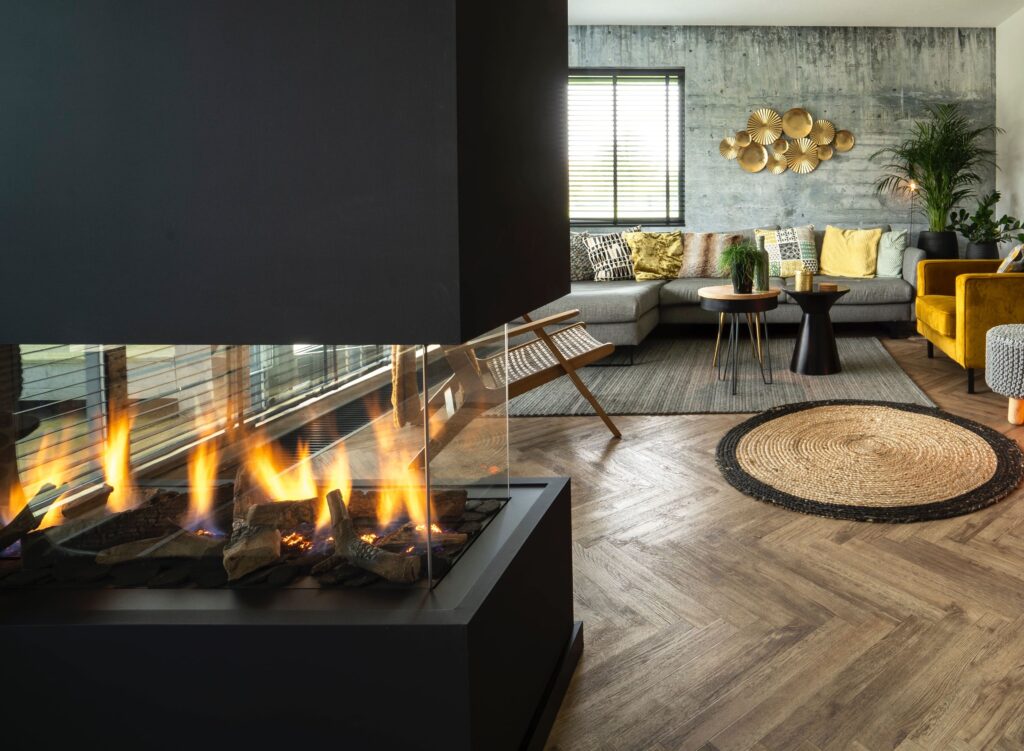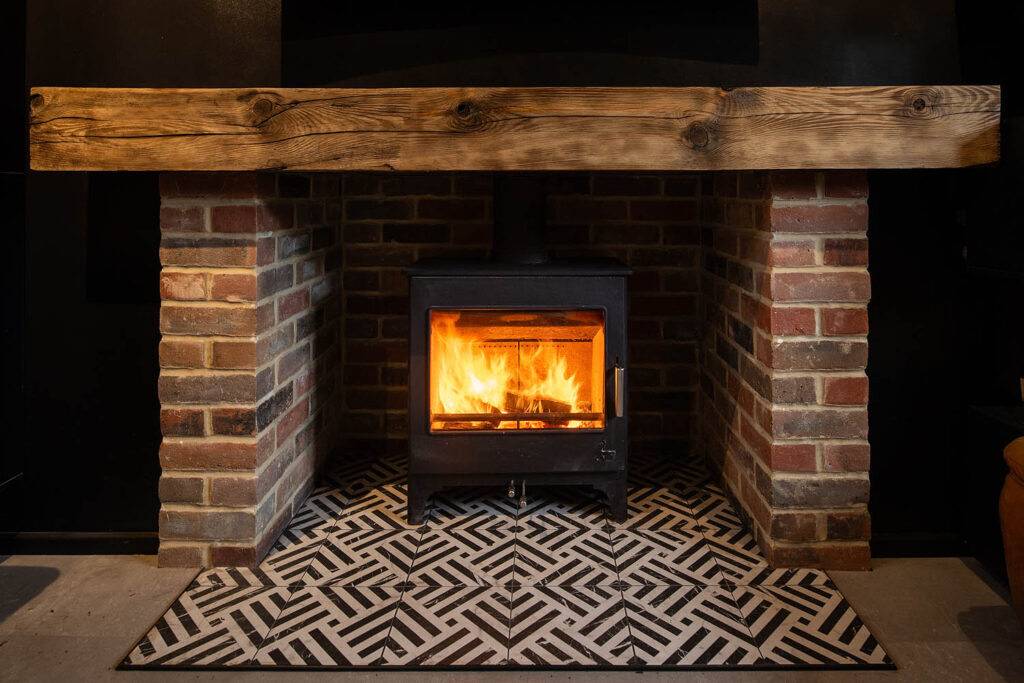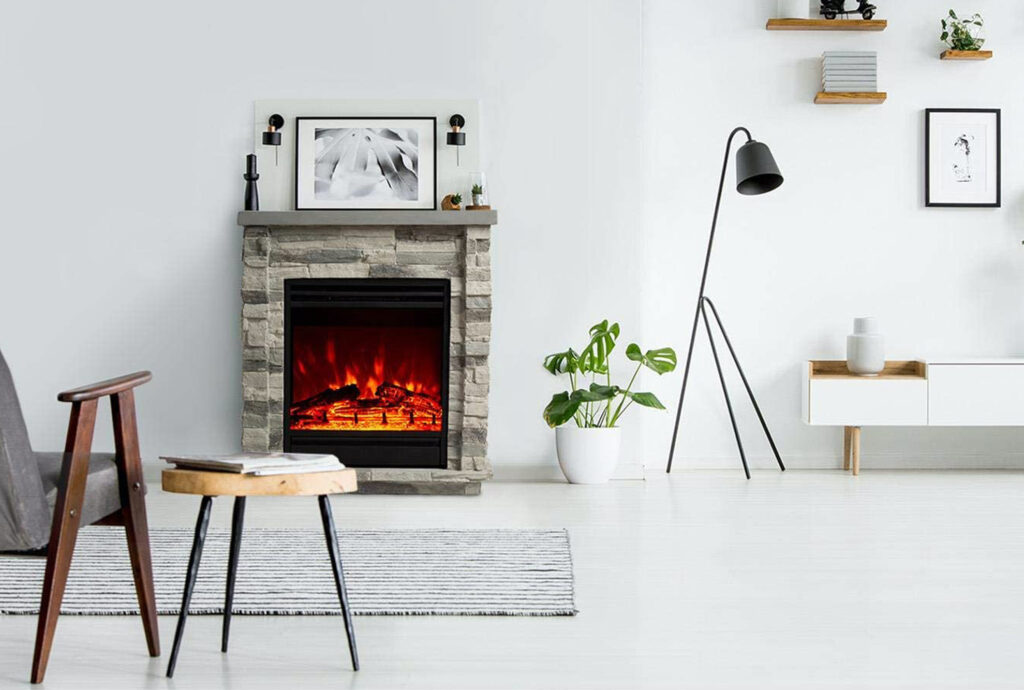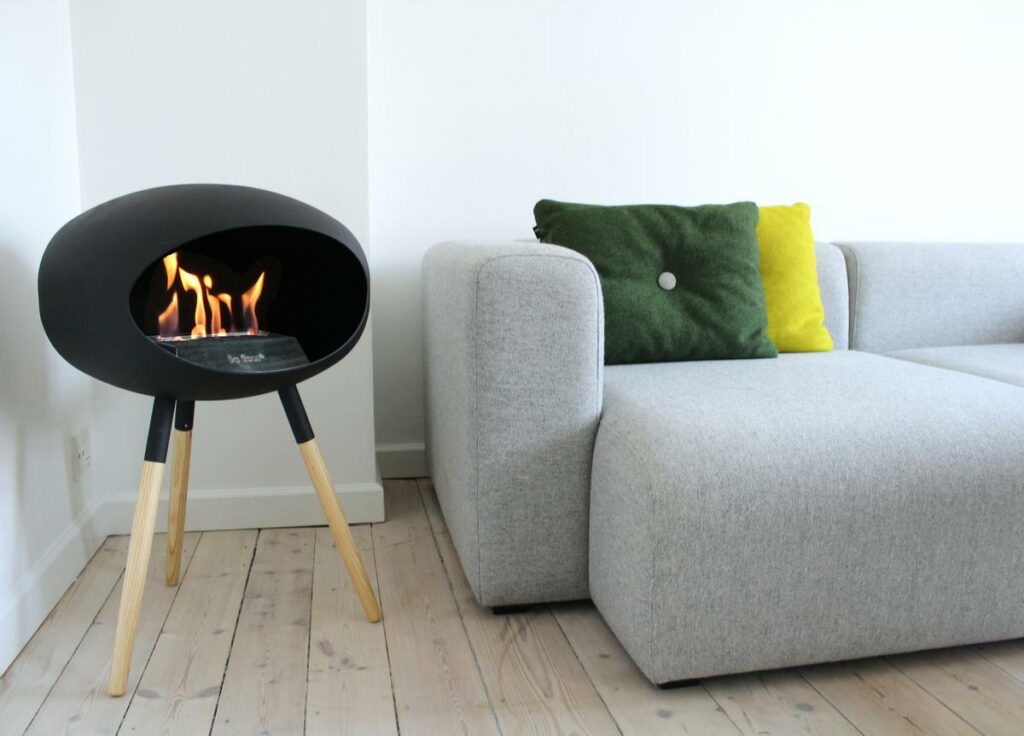Choosing the Right Fireplace for you and your family's needs
Are you here because you saw our Instagram post #ConverstationsWithAFireplace? (before you ask, the answer is yes, we make it a habit to converse with all appliances, furniture, and building elements that make up our projects, it’s just what we do.) If you haven’t seen the post then click on the link to our Instagram page. Feel free to hit the follow button to keep up to date with all the tips and tricks we share, to help make your design project a successful one. If you found us by other means, welcome, it’s good to have you here.
In this blog post we will discuss fireplaces, specifically the different types that exist on the market along with their pros and cons. If you would like further information about the wood-burning stove installed in our latest Kent project, this will be covered in a future post, keep an eye out for that.
Fireplaces come in various shapes and sizes, each with its own design, fuel source, and functionality. Below we have listed some of the common fireplaces installed in homes:
Gas Fireplace

A gas fireplace is designed to simulate the look and feel of a traditional wood-burning fireplace but operates using natural gas or propane as its fuel source. It provides the warmth and ambiance of a real fire without the need to burn wood.
Gas fireplaces come in various styles and designs, ranging from traditional to modern, and can be installed in various locations within a home.
Here’s how a typical gas fireplace works:
Gas Source: The fireplace is connected to a gas supply line, either natural gas from a utility company or propane from a tank.
Burner: Inside the fireplace, there is a gas burner that emits flames. The burner is usually made of metal tubes with small holes or slots through which the gas escapes.
Logs or Embers: Some gas fireplaces use ceramic logs or artificial fire embers to create a realistic appearance, while others have contemporary designs that use alternative materials like glass beads.
Ignition and Control: Gas fireplaces have an ignition system that starts the flow of gas and ignites it to produce flames. The flame height and heat output can be adjusted using controls, such as a switch, remote control, or thermostat.
Venting: Gas fireplaces require venting to remove combustion byproducts, such as carbon monoxide and water vapor, from the indoor space. Venting can be achieved through a chimney, direct venting (a double-walled pipe), or a ventless (vent-free) system, depending on the model.
Some of the pros and cons of a Gas Fireplace include:
Pros:
- Convenient and easy to use with simple on/off switches or remotes.
- Clean burning with minimal ash and soot, requiring less maintenance.
- Adjustable flame and heat output for customised comfort.
- Can be vented directly outside or through a wall, making installation flexible.
- No need for wood storage, cutting down on indoor mess.
Cons:
- Requires a gas line, which might not be available in all locations.
- Initial installation cost can be higher than other options.
- Limited ambiance compared to the crackling sounds and scent of a wood fire.
Wood-Burning stove

A wood-burning fireplace stove, commonly known as a wood stove, is a heating appliance that burns wood logs to generate heat. It is a highly efficient and versatile alternative to traditional wood-burning fireplaces. Wood stoves are freestanding units that can be installed in various locations in a home, offering an excellent source of warmth and ambiance.
Here’s how a typical wood-burning fireplace stove works:
Firebox: The firebox of a wood stove is made of fire-resistant materials, often lined with firebricks or metal. This is where the wood logs are placed and burned.
Door: The firebox is equipped with a sturdy door that can be opened to load wood and closed during operation. The door usually has a glass window, allowing you to enjoy the view of the burning fire.
Air Intake and Controls: Wood stoves have adjustable air vents or dampers that control the amount of oxygen supplied to the fire. Proper control of airflow is crucial for efficient and clean combustion.
Chimney Connection: Wood stoves require a chimney or flue pipe that connects to the stove’s exhaust outlet. The chimney vents the smoke and combustion byproducts outside.
Some of the pros and cons include:
Pros:
- Authentic and charming ambiance with the sights, sounds, and smells of burning wood.
- Provides excellent heat output, especially if you have access to well-seasoned hardwood.
- Wood can be a renewable and eco-friendly fuel source if sourced responsibly.
- Wood is generally readily available in many regions.
- High Efficiency: Wood stoves are designed to burn wood efficiently, providing more heat output with less wood consumption compared to traditional fireplaces.
- Powerful Heat Source: Wood stoves can produce a significant amount of heat, making them effective for heating large areas or even an entire home.
- Versatility: Wood stoves come in various sizes and styles, suitable for different room sizes and decor preferences.
- Heating During Power Outages: Wood stoves can be a reliable heat source during power outages, making them valuable during winter storms or emergencies.
Cons:
- Installation Requirements: Proper installation of a wood stove and its chimney is essential for safety and efficiency. Professional installation is recommended.
- Clearances: Wood stoves require specific clearance distances from combustible materials, which can limit placement options.
- Maintenance: Regular cleaning of the stove, chimney, and ash removal is necessary to prevent creosote buildup and ensure safe operation.
- Air Quality Concerns: Like other wood-burning appliances, wood stoves emit particulate matter and other pollutants that can affect indoor and outdoor air quality.
Electric Fireplace

Electric fireplaces are popular for their ease of installation and versatility. They are often used for ambiance and supplemental heat in homes where a traditional wood-burning or gas fireplace is not feasible due to space or venting limitations.
Some of the pros and cons include:
Pros:
- Easy installation as they don’t require venting or chimneys.
- Adjustable heat and flame settings with remote control.
- Safe and suitable for apartments and small spaces with limited ventilation.
- Minimal maintenance, no need for fuel, and low operating costs.
Cons:
- Primarily for decorative purposes; the heat output might be limited compared to gas or wood.
- Lack of authentic flame appearance, although modern models have improved in this regard.
- Dependence on electricity, which might not be ideal during power outages.
Ethanol Fireplace

Ethanol fireplaces have gained popularity in recent years due to their eco-friendliness and lack of need for a chimney or venting. They are often used for decorative purposes and can be easily installed in various locations within a home.
Here’s how a typical ethanol fireplace works:
Bioethanol Fuel: Ethanol fireplaces burn bioethanol, a renewable and eco-friendly fuel made from plant-derived materials, such as corn, sugarcane, or other agricultural byproducts. When bioethanol burns, it produces water vapor and a small amount of carbon dioxide, which is reabsorbed by plants, making it a carbon-neutral fuel source.
Burner: Inside the ethanol fireplace, there is a stainless steel or ceramic burner that holds the bioethanol fuel. The burner is designed with small openings or channels to control the rate of fuel consumption and regulate the size of the flame.
Ignition: To start the fire, you typically use a long lighter or a fireplace lighter to ignite the bioethanol fuel in the burner.
Flame Regulation: Most ethanol fireplaces come with a mechanism to adjust the size of the flame and control the heat output. Some models have a sliding lid or a damper to cover or uncover the burner openings.
Some of the pros and cons include:
Pros:
- No need for a chimney or venting, allowing for flexible placement in the home.
- Eco-friendly and renewable fuel source as ethanol is derived from plants.
- Minimal residue and easy to clean.
- Can provide a beautiful ambiance with real flames.
Cons:
- Lower heat output compared to gas or wood-burning fireplaces.
- Ethanol fuel might be more expensive than other fuel sources.
- Flame size and heat output may not be as controllable as other options.
In conclusion, choosing the right fireplace is often a personal choice, one that takes into account many factors. These include personal preference, latest trends, your location/region, budget, and any specific home requirements. Additionally, safety considerations and local regulations play a part when selecting and installing any type of fireplace.
Are you thinking of adding a fireplace to your home? Did you need help choosing one or deciding when it should be located? Get in touch with us via email on info@mazdesigns.co.uk or call us on 020 3719 3735 to see how we can help.
Did you find the above information useful? Head over to our Instagram page and give us a follow so you can stay up to date with all the latest trends that will help make your design process simple.